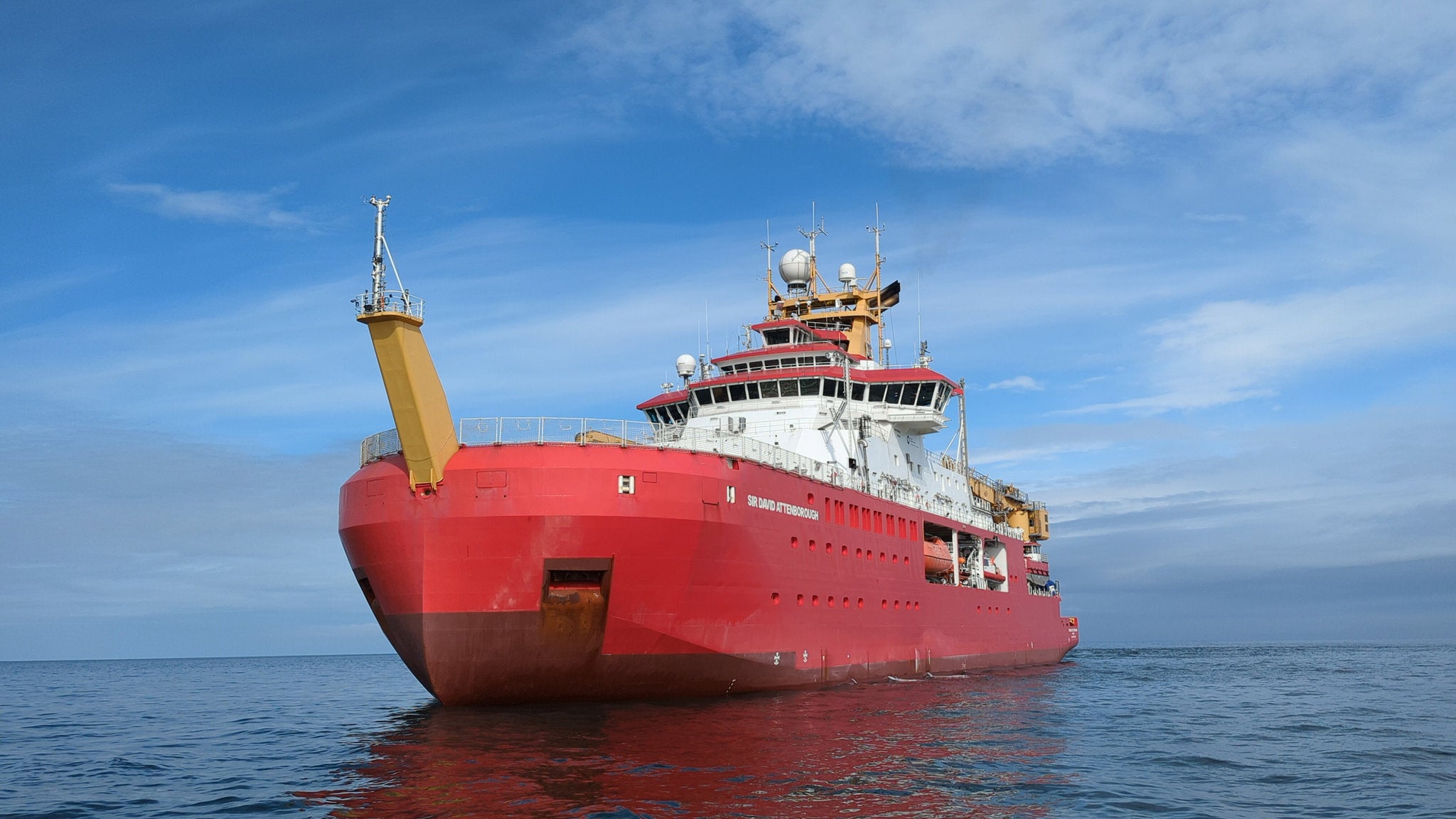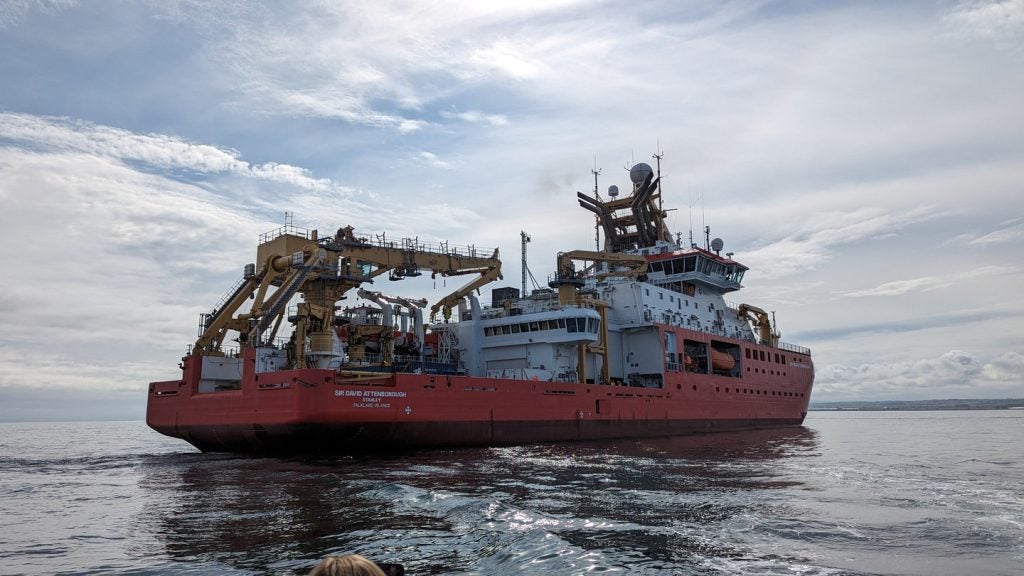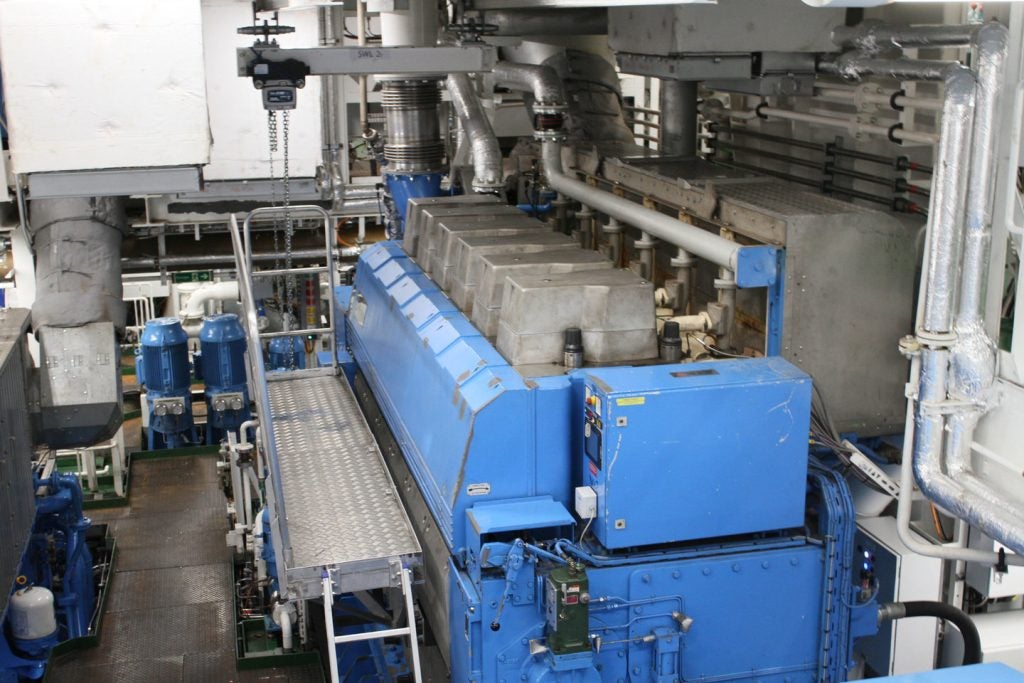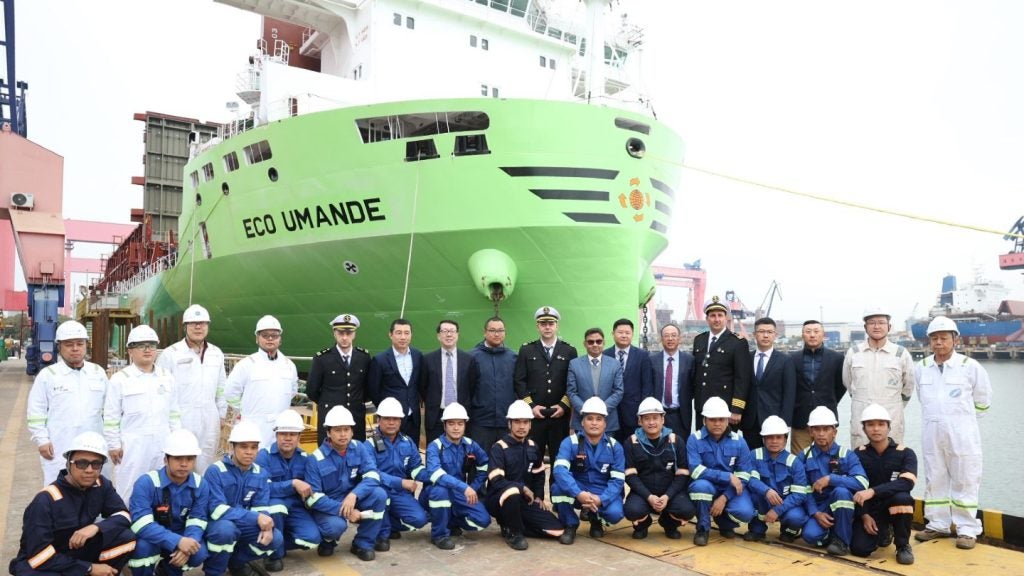
When asked what makes the RRS Sir David Attenborough (SDA) different from most ships, Captain Will Whately immediately starts listing off the vessel’s many capabilities, “We’ve got aircraft capability, we’ve got icebreaking, we’ve got dynamic positioning” He says.
Captain Whately goes on to name the quietness of the engine, enabling the use of acoustic equipment, the ship’s cargo capabilities, the scientific winch systems, and sensors under the waterline as he describes the vessel he has been working on since before the keel was laid in 2016.
The polar research and logistics vessel might be best known to the general public as the boat that could have been named Boaty McBoatface, the name topped a poll conducted by its owner the UK Natural Environment and Research Council (NERC), but it is the embodiment of Britain’s place as a leader in Antarctic research for many at the British Antarctic Survey (BAS), which operates the ship.
Just looking at the basics: the ship is 129 metres long at a Gross Tonnage of 15,000, with a range of 19,000 nautical miles at 13 knots, a diesel-electric propulsion system powered by Rolls Royce Bergen B33:45 engines, a helipad, and room for 30 crew.
However, the ship also boasts a moon pool, Dynamic Positioning (DP) 2 capability, accommodation for up to 60 scientists and support staff, and an icebreaking capability of 1m thick ice at 3 knots, not to mention the huge amount of lab space on board.
The RRS Sir David Attenborough is a technologically dense ship
In fact, while designing the SDA, NERC and BAS essentially had to fit two massive ships into one as they were replacing both the organisation’s former logistics vessel, the RRS Ernest Shackleton, and its research counterpart, the RRS James Clark Ross, so it’s no wonder that Whately describes it as a “technologically dense” ship.
How well do you really know your competitors?
Access the most comprehensive Company Profiles on the market, powered by GlobalData. Save hours of research. Gain competitive edge.

Thank you!
Your download email will arrive shortly
Not ready to buy yet? Download a free sample
We are confident about the unique quality of our Company Profiles. However, we want you to make the most beneficial decision for your business, so we offer a free sample that you can download by submitting the below form
By GlobalData“There are many different systems and capabilities within one hull, and trying to deconflict different requirements to ensure that all requirements are met equally, is really difficult.” He says.
“The ship is trying to be lots of things to lots of different people, so as mariners we want the ship to handle well, we want it to respond well, but each science discipline also has their own thing that they want. So trying to manage expectations from all those different disciplines is challenging.”

This becomes even more obvious when Ship Technology is given a tour of the vessel by scientific electronics engineer Carson McAfee who works alongside the scientists on board the ship to look after all the equipment that they need.
Speaking on the bridge, he explains how the SDA has been built with the collaboration between the scientific staff and crew in mind “from the get-go”, using the example of the bridge’s ability to display the same information shown in the labs.
“We’ve got this really good mix between the science operations and the crew on board and everyone’s on the same page. There’s a lot we do to try and enhance that communication and data sharing to make it work better.” He says.
“So it’s trying to do science optimally, that’s what we’re trying to get right, but we’ve got a lot of years of experience with this, and we’ve carried it to the ship.”
The moon pool
As he makes his way down the ship, McAfee reaches the four-metre-square large hole through the hull, known as the moon pool, a first for a BAS vessel.
Originating in the oil drilling industry, moon pools are usually used to provide easy access to the ocean for large drilling equipment, but here on the SDA, the moon pool is drastically changing the way that scientific cruises on board can collect data.
Multiple research vessels have used the direct opening to the water to deploy equipment such as ROVs (remotely operated vehicles) and AUVs (autonomous underwater vehicles) but it gains an additional advantage on an icebreaking vessel such as the SDA.
Previously, when BAS’ older research ships were travelling through ice, scientists would have been unable to collect any data from within the ocean itself as the thick ice surrounded the hull on both sides.

This issue is virtually eliminated by the moon pool as it can provide direct access to the water even in the thickest of ice that the SDA could end up in.
Nadine Johnston, a marine ecologist on the BIOPOLE programme, one of the projects participating in the SDA’s first full science cruise later this year, describes the moon pool as a “game changer in many respects,” as it allows her investigations into the dynamics of Copepods, tiny crustaceans found in water habitats all over the world, to include information on samples collected from under the ice.
These samples could massively improve the information collected by the science cruise by widening the dataset that can be analysed by scientists later on and showing a fuller picture of the life cycle of the animals.
Dynamic positioning
The use of the ship’s infrastructure to enhance the collection of scientific data is also something seen in the SDA’s DP abilities, another piece of tech that originated in the oil rigging industry which is able to position the ship within three or four decimal places of given coordinates.
Chief Office Rob Bellis describes the technology to Ship Technology as the crew of the SDA test the systems.
“The whole purpose of dynamic positioning is all about redundancy,” he says, “There are lots of sensors and inputs and engine configurations so you can hold position, even with some failures in the system we can still hold position.”
The ship’s systems use GPS coordinates as a position reference and, with the help of four thrusters, two main propellors and two rudders, will hold the SDA to the exact coordinates even during the harsh weather conditions that are all too common for Bellis.

“We were doing Drake’s Passage last season, doing CTD [an oceanography testing instrument] transacts right across it, and we were seeing 60, 65 knots of wind and it was quite comfortable holding position.” He says, recalling a time when the waves swelled up to eight metres.
Though it may seem odd to try and hold position during such conditions, Johnston explains that the DP technology is essential for ensuring consistency in the collection of data across different seasons, “It’s really important that we can go back in another period of time and make sure we’re in the exact same location,” She says.
Bellis also explains that the DP 2 classification of the SDA means that it has two separate sets of engines that can operate the system, allowing the technology to continue working even if one set fails, something that the RRS James Clark Ross did not have.
Breaking the ice
While the SDA has many technological enhancements to make it fit for Antarctic research, perhaps the most interesting for many, and one of the most essential for the hostile environment encountered at the world’s polar south, is its icebreaking capability.
However, though many people probably imagine a ship smoothly smashing through any ice in its path, the actuality of icebreaking is a lot slower.
Captain Whately says that when going through thicker areas of ice “you’ll notice the bow ride up and then the weight of the ship over the top of the ice will break it and the ship keeps moving forward.”
The process of breaking a path through the ice while often tedious, is “great fun” for the captain, who adds that, although its 28.5mm thick hull is technically capable of going through 1m of ice at 3 knots, the SDA can break through two or three metres of ice if needed.
It also involves slightly different thinking to a captain’s usual behaviour as Whately admits the idea of heading directly towards ice is “counterintuitive” to the usual training.

He explains: “When we’re approaching the best thing to do is to hit it perpendicularly, so as we’re approaching, we look at it and think, if you hit it at a bit of an angle we can bounce off and sort of have a glancing blow, so you’re best just to go into it completely perpendicularly so you’ve got all your power going ahead then.”
While the SDA is an impressive ship on its own, it’s the work of the scientists and crew on board that is perhaps the most important part of understanding the vessel.
Though it’s clear when speaking to everyone onboard the research ship, from the kitchen staff to the lab manager, that they understand the need to invest in Antarctic research, the vessel’s work was perhaps best summed up by the man who gave his name to the ship.
As remembered by Captain Whately, the ship’s namesake Sir David Attenborough himself once said: “The certainty of the future of the human race lies in the hands of the people who work for the British Antarctic Survey.”







